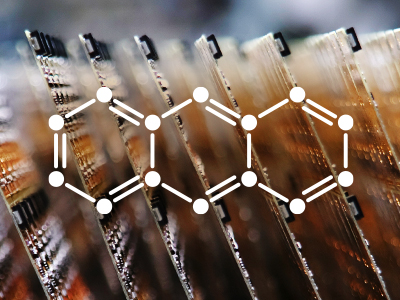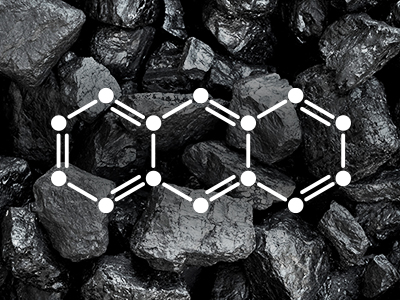In our previous article, we explored the use of polycyclic aromatic hydrocarbons (PAH) in industrial processes and consumer products along with their negative impact on the environment and human health. Now we will look at emerging legislation intended to regulate and reduce the use of PAHs where possible.
EU Regulation
As very common environmental contaminants, PAHs are found in several consumer products and are restricted due to their high concerns. Commission Regulation (EC) No. 1881/2006 of December 19, 2006, sets maximum levels for certain contaminants in foodstuffs. Commission Regulation (EU)2020/1255 of September 7, 2020, amended the earlier Regulation (EC) No. 1881/2006 regarding maximum levels of PAHs in traditionally smoked meat, fish, and associated products. It also established a maximum level of PAHs in powders of food of plant origin used for the preparation of beverages.
On December 7, 2013, the European Commission implemented the restriction of carcinogenic PAHs in consumer products, initiated by Germany, as a binding legal standard. According to Regulation (EU) 1272/2013, consumer products shall not be placed on the market after December 2015 if they contain components which during normal use come into contact with the skin or oral cavity and whose content of specific PAHs classified as carcinogenic exceeds a given limit value.
PAH Legislation Under REACH Annex XVII
Many PAHs are known or suspected carcinogenic and mutagenic and reprotoxic compounds (e.g., benzo(a)pyrene, dibenzo (a, h) anthracene, etc.) in the categories 1A, 1B, or 2 according to the Classification Labelling and Packaging (CLP) regulation which are classified in Annex VI of Regulation (EC) 1272/2008. They are included in the candidate list under article 59 of REACH which contains several complex substances derived from petroleum and coal such as coal tar pitch high temperature (CTPHT) – EC 266-028-2; anthracene oil EC 292-602-7 and other anthracene-related fractions.
The Committee for Socio-economic Analysis (SEAC) adopted its final opinion supporting the proposal for restricting eight PAHs found in granules and mulches used, for example, in synthetic turf pitches and playgrounds. Eight PAHs are restricted in tires/extender oils, articles supplied to the public, and children’s articles.
The following eight PAHs are listed in the REACH Annex XVII along with their restricted limits:
- Benzo[a]pyrene (BaP) (CAS No 50-32-8) – 100 mg/kg (0.01%)
- Benzo[e]pyrene (BeP) (CAS No 192-97-2) – 1000 mg/kg (0.1%)
- Benzo[a]anthracene (BaA) (CAS No 56-55-3) – 1000 mg/kg (0.1%)
- Chrysen (CHR) (CAS No 218-01-9) – 1000 mg/kg (0.1%)
- Benzo[b]fluoranthene (BbFA) (CAS No 205-99-2) – 1000 mg/kg (0.1%)
- Benzo[j]fluoranthene (BjFA) (CAS No 205-82-3) – 1000 mg/kg (0.1%)
- Benzo[k]fluoranthene (BkFA) (CAS No 207-08-9) – 1000 mg/kg (0.1%)
- Dibenzo [a, h] anthracene (DBAhA) (CAS No 53-70-3) – 100 mg/kg (0.01%)
These limitations apply to articles supplied to the public if any of their rubber or plastic components come into direct as well as prolonged or short-term repetitive contact with human skin or oral cavity.
The limit is stricter for toys and other childcare articles. These may not be sold if they contain more than 0.5 mg/kg of any listed PAH. New requirements for restriction of PAHs and their limits with articles are,
- General articles toys (including activity toys) – 0.5 mg/kg (0.00005%)
- Childcare articles – 0.5 mg/kg (0.00005%)
All other articles supplied to the public are limited to 1.0 mg/kg (0.0001%) each, including:
- Sports equipment such as bicycles, golf clubs, racquets
- Household utensils, trolleys, and walking frames.
- Tools for domestic use
- Clothing, footwear, gloves, and sportswear
- Watchstraps, wristbands, masks, and headbands
Toys, including activity toys, and childcare articles, shall not contain more than 0.5 mg/kg (0.00005 % by weight of this component) of any of the listed PAHs.
Monitoring Sources of PAHs and Human Exposure
Environmental Sources
The atmosphere is the most important means of PAH dispersal, it receives the bulk of the PAH environmental load resulting in PAHs being ubiquitous in the environment. Exposure to PAHs is affected by proximity to intense combustion sources, such as heavily trafficked roads, municipal waste incinerators, and industrial sites. An additional source of PAHs is the combustion of solid fuel for space heating. In this regard, special attention ought to be paid to the use of biomass in large urban and metropolitan areas. Biomass combustion for heating is expected to contribute to indoor exposure as well.
Individuals are exposed to complex mixtures of pollutants that may have arisen from a multitude of sources. It is rarely possible to track down specific atmospheric sources, especially in urban environments.
Air Pollution – Besides direct exposure to automotive exhaust, secondary exposure may occur to PAHs that have been previously deposited in soils, highways, and other locations of human activities. Instrumentation and methods have been developed that make it possible to measure both PAHs and volatile organic compounds in indoor air.
Water Pollution – PAH may be found to be contaminants of both surface and ground water, with atmospheric deposition providing the major contribution.
Soil – Airborne PAH originating in both stationary and mobile sources may be deposited near the source but can also travel a considerable distance. Heavy soil contamination has been documented on current and former industrial sites, including those of former manufactured gas plants Contributions to PAH in residential soil are primarily from deposition of particulate matter from highway traffic, with localized contributions from barbecuing and operation of gasoline-powered lawnmowers.PAH along highway rights of way are mainly from automotive exhaust as well as from wearing of tires and asphalt.
Marine Sediment – Sediments are major sinks for PAH, primarily due to their low solubility and strong affinity for organic carbon in particulate matter.
Personal Sources
Dietary – Food exposure to PAH can be through preparation of food and in the food itself. PAH has been measured in emissions from charcoal grilling of meat.
Cigarette Smoking – Cigarette smoke contains an abundance of PAHs which contributes to its carcinogenic properties.
Occupation – Exposure to PAH occurs in numerous industries, including coke production and downstream industries like steel manufacture, aluminum, petroleum refining, coal gasification, and manufacture. The primary routes of exposure to coal tar and coal-tar products are inhalation, ingestion, and dermal contact.
Industrial Sources
Oil-and-Gas Industry and Petroleum Fuels – Many sources of PAH exposure are directly related to the oil-and-gas industry and the use of petroleum as a fuel. Petroleum, or crude oil, is the most heavily consumed form of energy, comprising 42.7% of total world energy consumption. Petroleum provides gasoline for transportation and heating oil and for a variety of nonenergy products, such as lubricating oil and chemical feedstocks from which plastics are made. PAH, being produced whenever organic material is combusted, is emitted in the form of air pollution in either volatile (gaseous) or particle form.
Technical Challenges in Biomonitoring PAHs in Humans
From a technical point of view, methods already exist for the determination of some PAHs (such as BaP) in urine. Further methodological developments may be necessary; however, solutions to this may be found by the European Human Biomonitoring Initiative cost-effectively. Considering that exposure to PAHs may occur from multiple sources and through multiple exposure routes, further understanding of the determination of the overall exposure levels is necessary. Human biomonitoring (HBM) information would be extremely useful in determining the overall exposure of the general population or of sensitive sub-populations, particularly children and specific target groups, to carcinogenic PAHs.
How to Reduce Our Exposure to PAH
Humans can reduce their exposure to PAH by decreasing consumption of smoked and charbroiled foods, decreasing the use of coal-tar-based cosmetics and shampoos, and avoiding exposure to dust and fumes by wearing an appropriate respirator when working with products containing PAHs.
The REACH Regulation and PAHs in Consumer Products
The European Union’s REACH regulation defines maximum concentrations for eight PAH compounds in products that meet the human body. Such products include, among others, clothing, accessories, sports equipment, tools, and household utensils. These products may not be sold in the EU if they contain more than 1 mg/kg of any of the eight PAHs.
ECHA’s Committee for Risk Assessment (RAC) supports the proposal to restrict PAHs in clay targets for shooting. The restriction aims to prevent further environmental emissions of these toxic and very persistent substances that build up in humans and animals. The proposed restriction introduces a 0.005 % weight-by-weight concentration limit for the sum of 18 indicator PAHs after a one-year transition with a 1% concentration limit.
Drinking Water Regulation
The new Drinking Water Directive introduces the obligation for member states to improve or maintain access to water intended for human consumption, with a focus on human health protection and improving access to water for all segments of the population. Directive (EU) 2020/2184 of the European Parliament and of the Council of December 16, 2020, on the quality of water (recast) was adopted and entered into force on January 12, 2021. The EU member States will now have two years to transpose it into national legislation.
This directive defines maximum levels for a wide range of chemical contaminants, including PAHs. According to the directive, the sum of benzo(b)fluoranthene, benzo(k)fluoranthene, benzo(ghi)perylene, and indeno(1,2,3-cd)pyrene must not exceed 0.10 μg/l. In addition, the amount of benzo(a)pyrene must not exceed 0.01 μg/l.
EU regulations on PAH in food
PAH compounds may end up in food because of environmental contamination of the raw materials, or they may be formed during the manufacturing or cooking process. They are most likely to be present in smoked, roasted, grilled, or dried foods, oils, and fats. EU regulations mandate PAH testing to be performed on such high-risk foods and products intended for small children. The maximum levels for PAH in different foodstuffs are set in Regulation (EU) No 835/20112. Not all PAH compounds need to be screened individually. Instead, the legislation places limits on the presence of benzo(a)pyrene and the combination of benzo(a)pyrene, benz(a)anthracene, benzo(b)fluoranthene, and chrysene, known together as PAH4.
Conclusion
The EU and other governments are moving to regulate PAHs in all kinds of industrial and consumer products due to their negative effects on human health and the environment. Manufacturers can stay compliant by limiting their use or seeking out environmentally-friendly alternatives.




